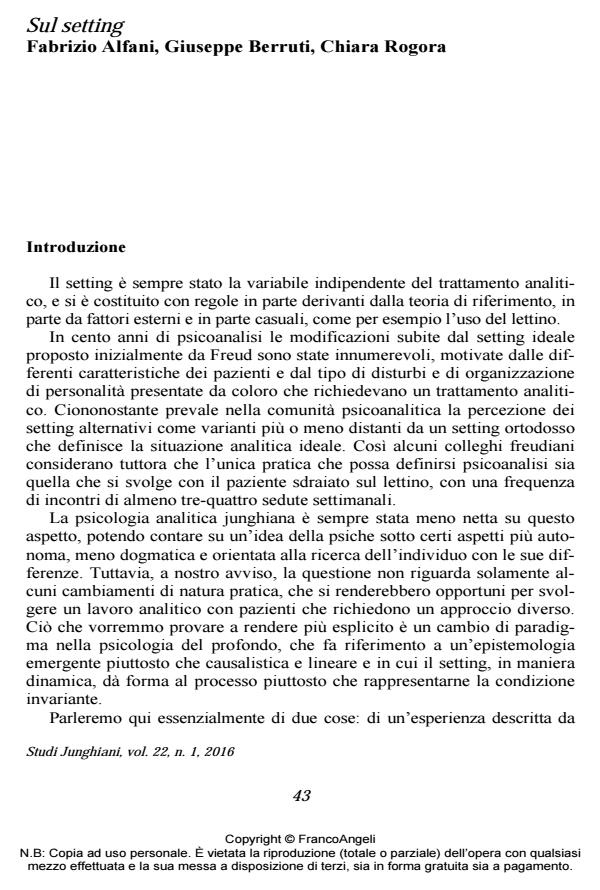Sul setting
Titolo Rivista STUDI JUNGHIANI
Autori/Curatori Fabrizio Alfani, Giuseppe Berruti, Chiara Rogora
Anno di pubblicazione 2016 Fascicolo 2016/43
Lingua Italiano Numero pagine 19 P. 43-61 Dimensione file 206 KB
DOI 10.3280/JUN2016-043003
Il DOI è il codice a barre della proprietà intellettuale: per saperne di più
clicca qui
Qui sotto puoi vedere in anteprima la prima pagina di questo articolo.
Se questo articolo ti interessa, lo puoi acquistare (e scaricare in formato pdf) seguendo le facili indicazioni per acquistare il download credit. Acquista Download Credits per scaricare questo Articolo in formato PDF

FrancoAngeli è membro della Publishers International Linking Association, Inc (PILA)associazione indipendente e non profit per facilitare (attraverso i servizi tecnologici implementati da CrossRef.org) l’accesso degli studiosi ai contenuti digitali nelle pubblicazioni professionali e scientifiche
Gli Autori propongono alcune riflessioni sul setting, considerandolo un dispositivo al servizio della relazione, che può assumere diverse forme e svolgersi in diversi contesti. Prendendo spunto da tre brevi vignette cliniche viene posto in evidenza come il lavoro analitico venga oggi proposto in contesti profondamente diversi rispetto alla tradizionale stanza d’analisi. Facendo riferimento al gioco e alla rappresentazione teatrale viene messo in evidenza come una delle caratteristiche peculiari del setting sia quella di definire un luogo e un tempo entro i quali la coppia analitica possa sperimentare una vitale ambiguità (nel senso di Racamier) e di gioco (nel senso di Winnicott), all’interno di un processo analitico considerato dal punto di vista di una epistemologia emergente e non causalistica e lineare.
Parole chiave:Setting, relazione analitica, emergentismo, ambiguità, gioco, momenti di incontro
- Setting e processi dissociativi Gianluigi Di Cesare, Fabrizio Alfani, in STUDI JUNGHIANI 47/2018 pp.47
DOI: 10.3280/JUN2018-047004 - L'esperienza analitica e la realtà virtuale Fabrizio Alfani, in STUDI JUNGHIANI 58/2024 pp.22
DOI: 10.3280/jun58-2023oa16433
Fabrizio Alfani, Giuseppe Berruti, Chiara Rogora, Sul setting in "STUDI JUNGHIANI" 43/2016, pp 43-61, DOI: 10.3280/JUN2016-043003